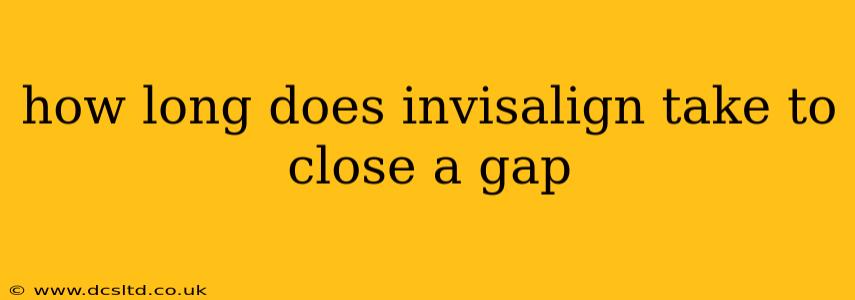Closing a gap with Invisalign depends on several factors, making it impossible to give a single definitive answer. While some minor gaps might close relatively quickly, larger or more complex cases require significantly more time. This article will explore the variables influencing treatment duration and answer frequently asked questions surrounding Invisalign gap closure.
What Factors Influence Invisalign Treatment Time for Gap Closure?
The length of your Invisalign treatment for closing a gap is highly individualized and determined by:
- Size of the Gap: A small gap between two teeth will naturally take less time to close than a significantly larger space.
- Severity of Malocclusion: If the gap is a symptom of a broader misalignment issue (like an overbite or underbite), treatment time will increase as Invisalign addresses the underlying problems.
- Tooth Movement Complexity: Straightforward gap closure is faster than cases needing significant tooth rotation or other complex movements.
- Patient Compliance: Wearing your aligners for the recommended 20-22 hours per day is crucial. Inconsistent wear significantly prolongs treatment.
- Doctor's Expertise: An experienced orthodontist can create a more efficient treatment plan, potentially shortening the overall time.
- Individual Biology: How your teeth respond to the movement is a biological factor influencing treatment duration. Some patients respond faster than others.
How Long Does Invisalign Typically Take?
While highly variable, Invisalign treatment generally ranges from 6 to 18 months, with an average of around 12 months. Gap closure alone might be faster if it's a relatively simple case, potentially falling within the 6 to 12 month range. However, always consult with your orthodontist for an accurate estimate based on your specific situation.
What is the Average Treatment Time for Different Gap Sizes?
There's no set timetable, as gap size is just one variable. However, we can offer general expectations:
- Minor Gaps: These might close within 6-9 months.
- Moderate Gaps: Expect a treatment time of 9-12 months.
- Significant Gaps: Cases requiring substantial tooth movement could take 12-18 months or longer.
Can I Speed Up My Invisalign Treatment for Gap Closure?
While you can't significantly accelerate the biological process of tooth movement, you can optimize your treatment by:
- Strictly adhering to the prescribed wear schedule: Wearing your aligners for the recommended hours is critical.
- Attending all scheduled appointments: Regular check-ups ensure your treatment is progressing as planned.
- Following your orthodontist’s instructions meticulously: This includes proper cleaning and care of your aligners.
What Happens After Invisalign Treatment is Complete?
Once your Invisalign treatment is finished, your orthodontist will likely recommend a retainer to maintain the corrected position of your teeth. This prevents the teeth from shifting back into their original positions. The retainer will typically be worn either full-time initially and then transitioned to nighttime wear long-term.
Is Invisalign Effective for Closing Gaps?
Yes, Invisalign is highly effective for closing gaps, both minor and significant. The aligners gently apply pressure to gradually shift the teeth into the desired position. Its effectiveness is comparable to traditional braces, with the added benefit of being removable.
How Much Does Invisalign Cost to Close a Gap?
The cost of Invisalign varies depending on the complexity of the treatment plan and your location. It's best to consult with an orthodontist for a personalized quote. Factors such as the number of aligners needed, the duration of treatment, and the orthodontist's fees influence the total cost.
Disclaimer: This information is for educational purposes only and should not be considered medical advice. Always consult with a qualified orthodontist to determine the best treatment plan for your specific needs. They can provide a personalized assessment, estimate treatment time, and address any concerns you may have.
